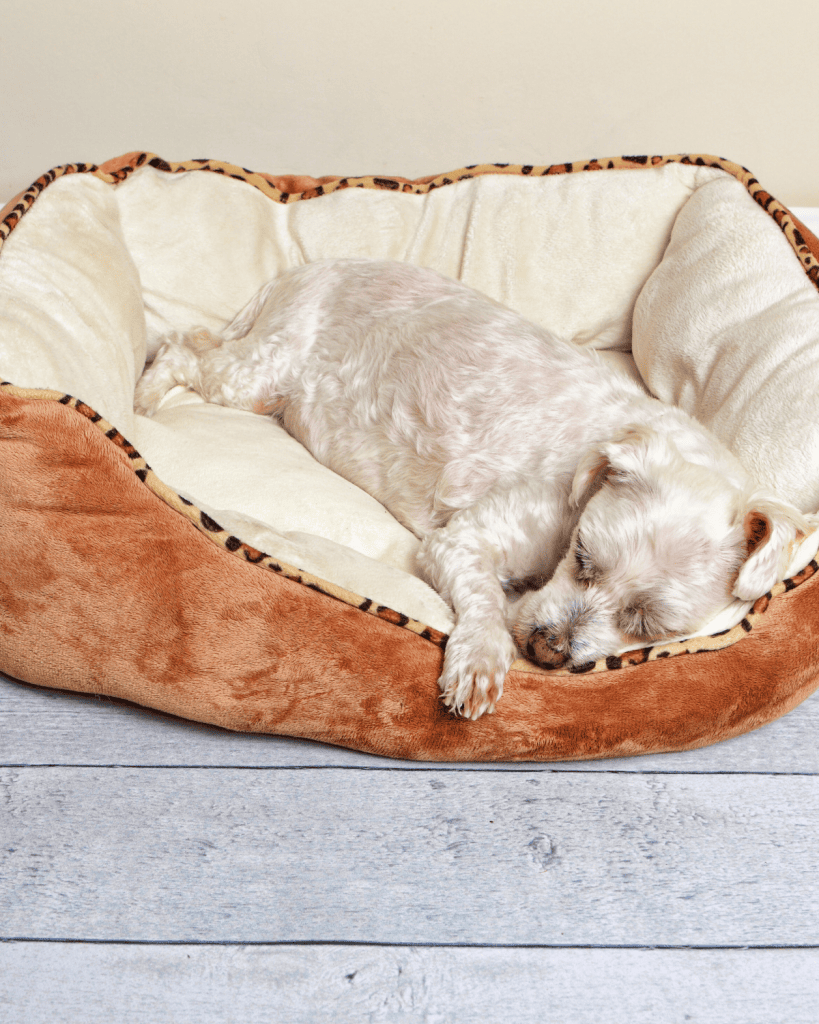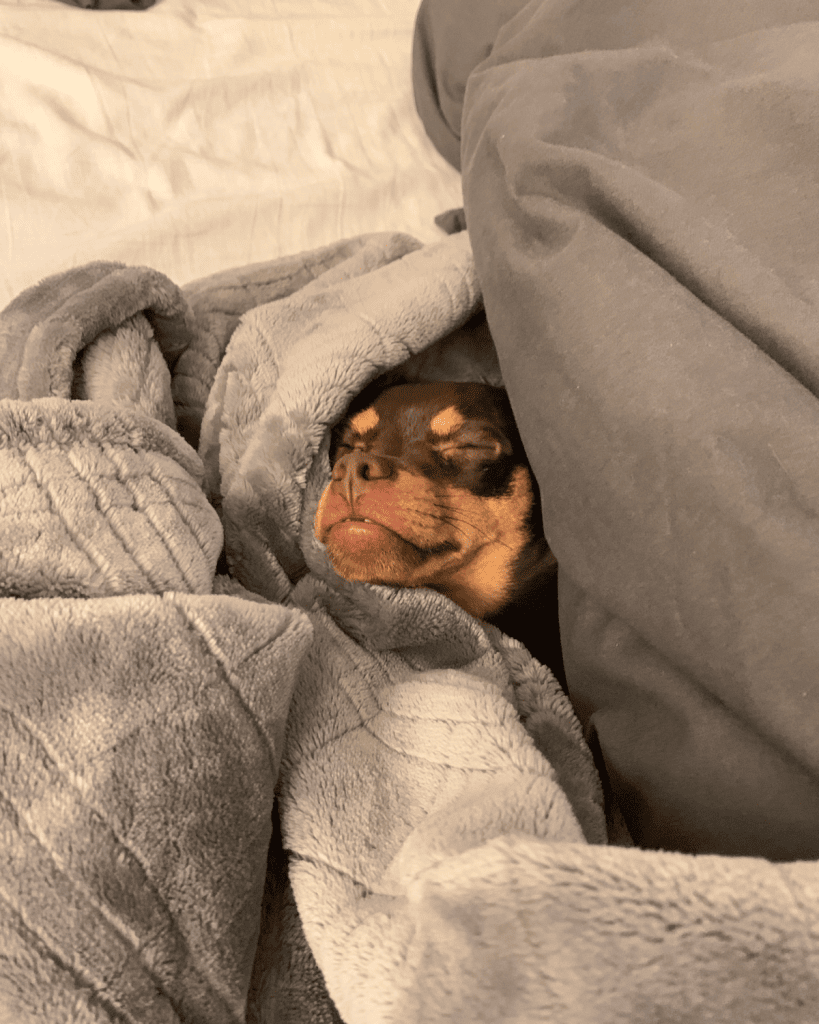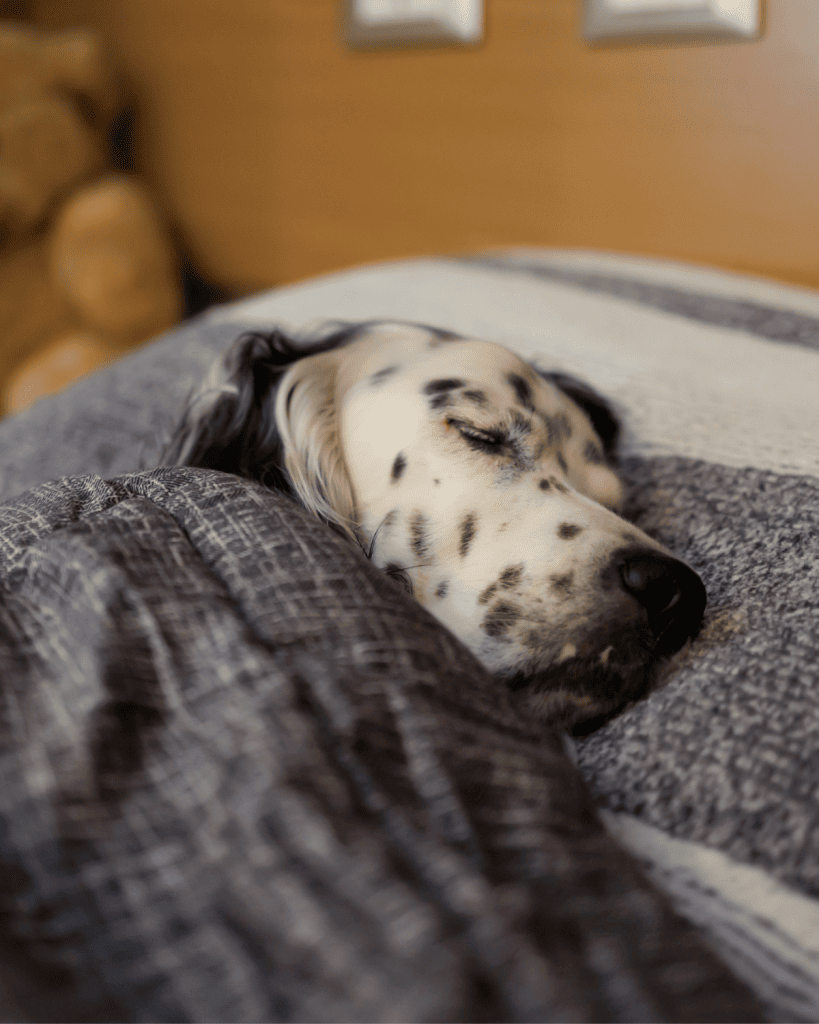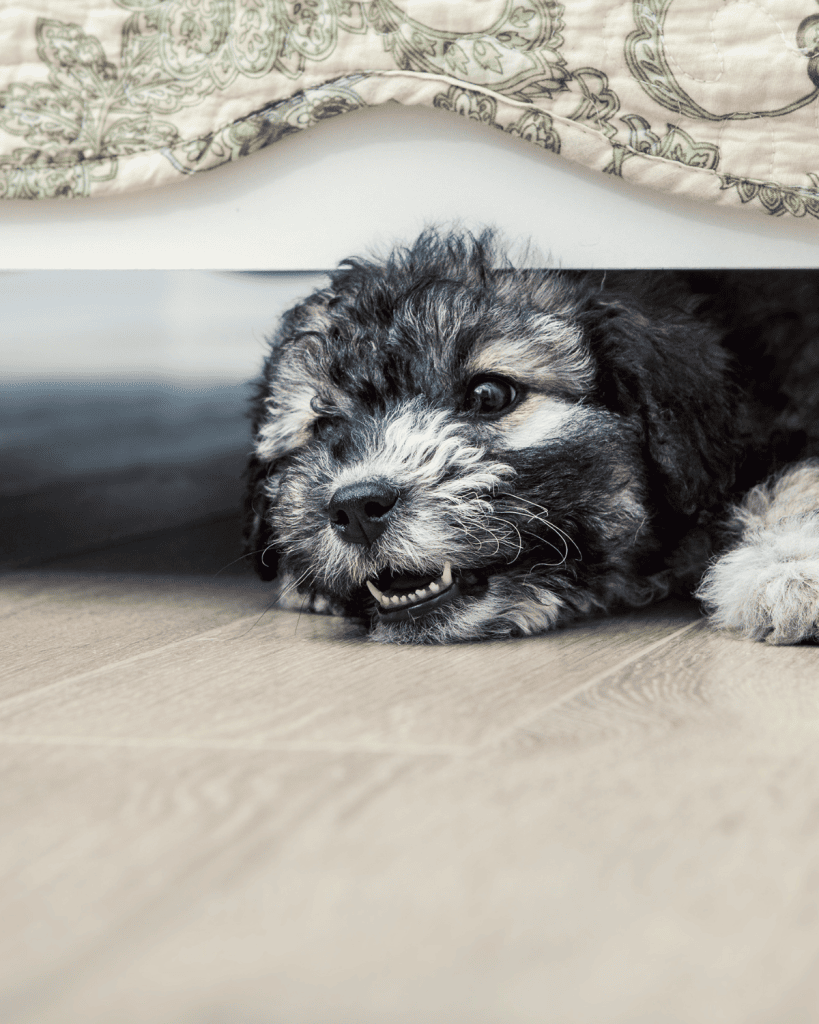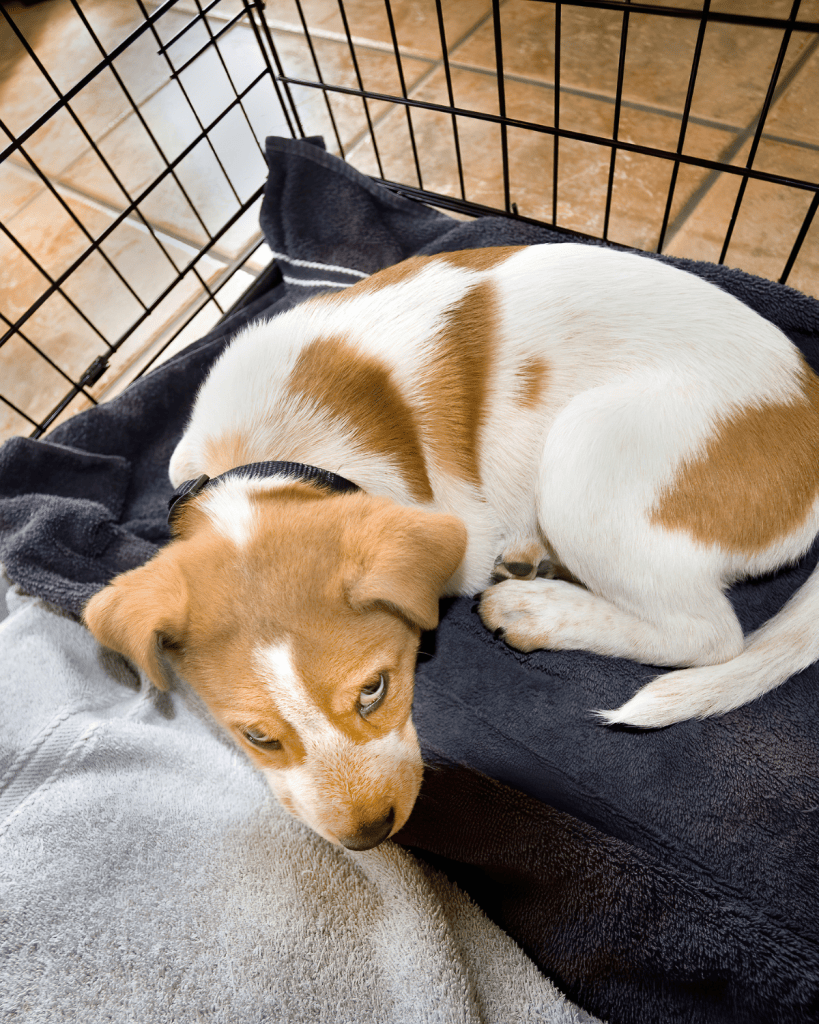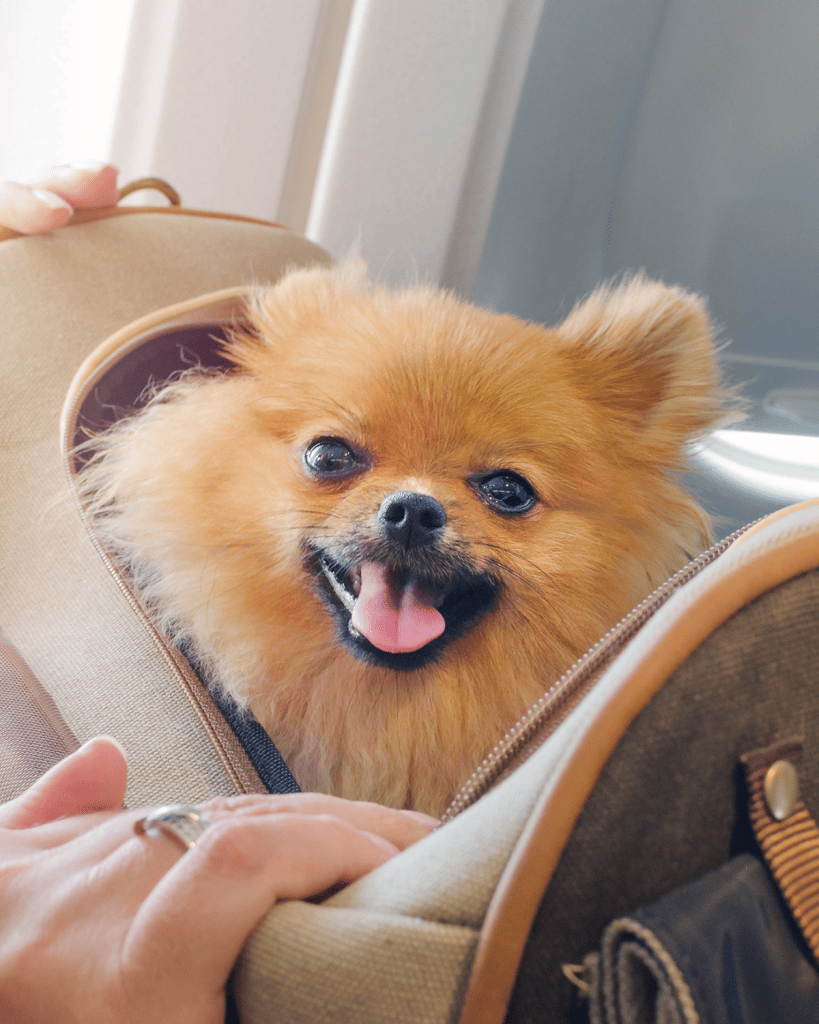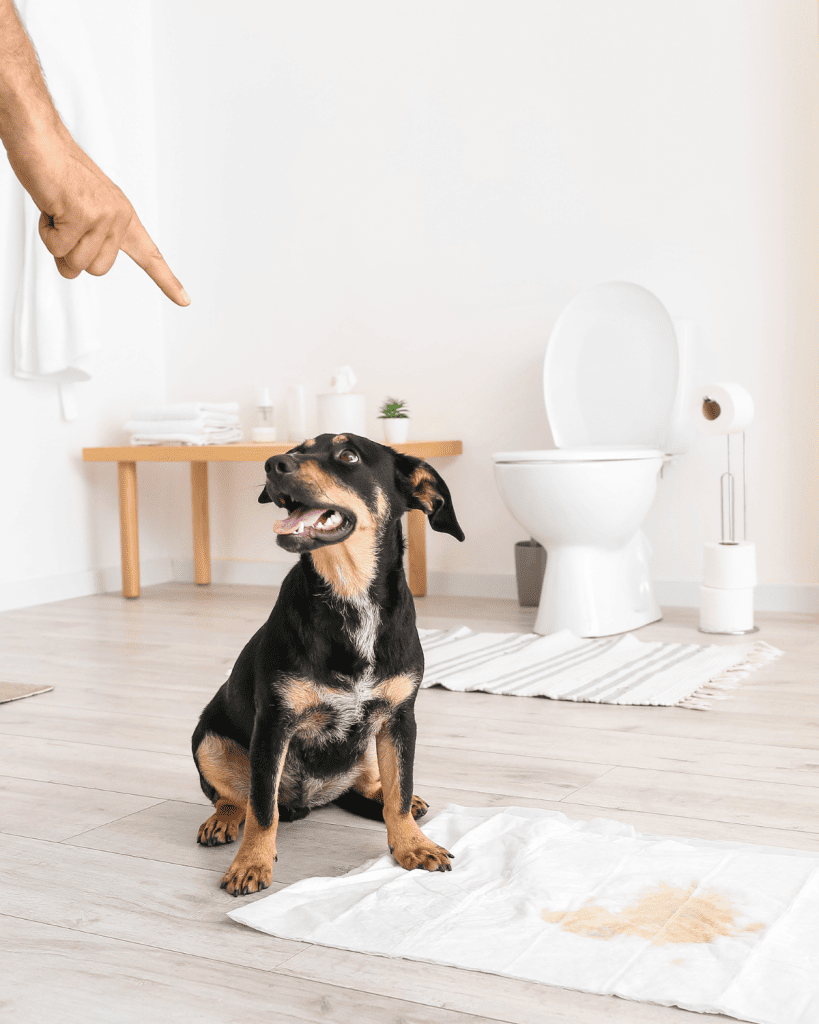Teach Your Dog Or Puppy Table Manners & End Begging
Is there much worse than sitting down for a family meal and getting a dog or puppy jumping all over you, or whining for table scraps?
Personally, it’s something I hate, but that boundary is a challenge and really frustrating to train.
It’s a hole I noticed in my own dog’s training – and as a professional dog trainer, I immediately got really embarrassed when my dog’s couldn’t just chill whilst we ate at the table.
Now, admittedly, like most families the Rebarkable household doesn’t spend a lot of time at the table – certainly less than I’d like. But hey, we’re a home where we’re eating on the sofa, or gaining sustenance so that we can go work and that doesn’t always mean we use a table – so I set about doing some training.
Now, I do live in a multi-dog home, and I have two coonhounds and a german shepherd, I’m also a trainer who does this for a living, and has won a lot of awards for my training – so I want to share what worked for us, and how you can adapt it to your own home.
Note: If your dog struggles with resource guarding – this training is not for you! Table manners do not solve severe behavior problems like resource guarding, the same way a crate doesn’t solve separation anxiety. Please engage a qualified trainer or behavior consultant for this!
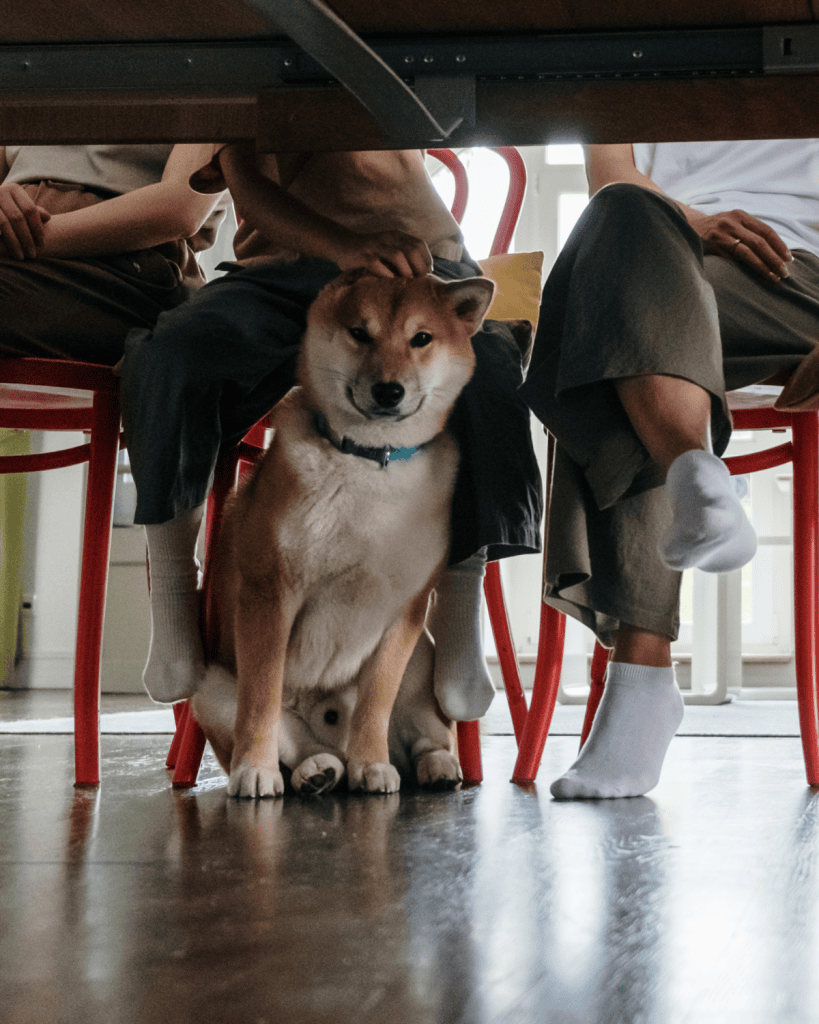
We Always Start With Understanding
It’s almost a trope these days, of a dog begging, those big ol’ puppy dog eyes over the dining table, and then bam kid feeds them the broccoli under the table, Right? But why is that? Other than the kinderschema that happens, dog owners like to make their dog happy.
First, we have to remember our dogs, being opportunistic eaters, will take advantage of any and all opportunities to eat. It’s why they scavenge, and raid your bin, it’s also the reason (we suspect) that our dog’s ancient ancestorsended up getting domesticated.
This tendency can translate into begging behavior, given the right conditions. A significant factor that shapes this tendency is the response they receive from humans when they demonstrate interest in our food. If a puppy learns that making eye contact, whining, or pawing at the table amounts to a share of delicious tidbits, the connection is made: begging equals rewards.
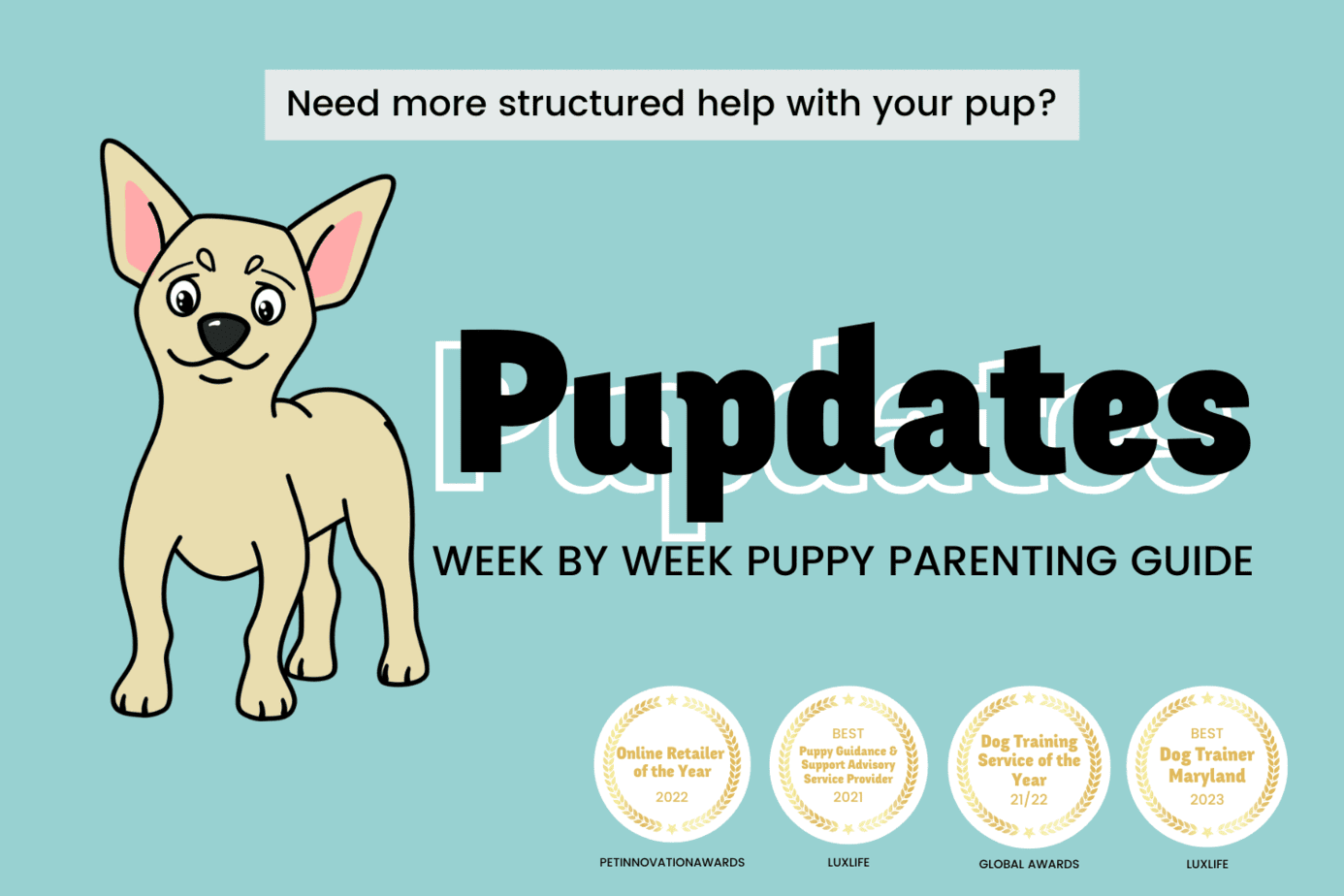
The Role of Positive Reinforcement in Begging
This is one of the prime examples of positive reinforcement in really life.
Positive Reinforcement was defined in operant conditioning, and essentially means if the subject is given a positive result from a test, it will be more likely to use that approach again.
Which in this situation translates to “If I beg, and get food, I’ll beg again” and so bad table manners begin. And when you get a new puppy, it’s so easy to give in, and let them have a little people food from the table. This is very much like counter surfing.
Positive reinforcement sits at the heart of successful dog training, focusing on rewarding good behaviors to promote their repetition. So how, do we shape table manners, when the act of begging is reinforcing?
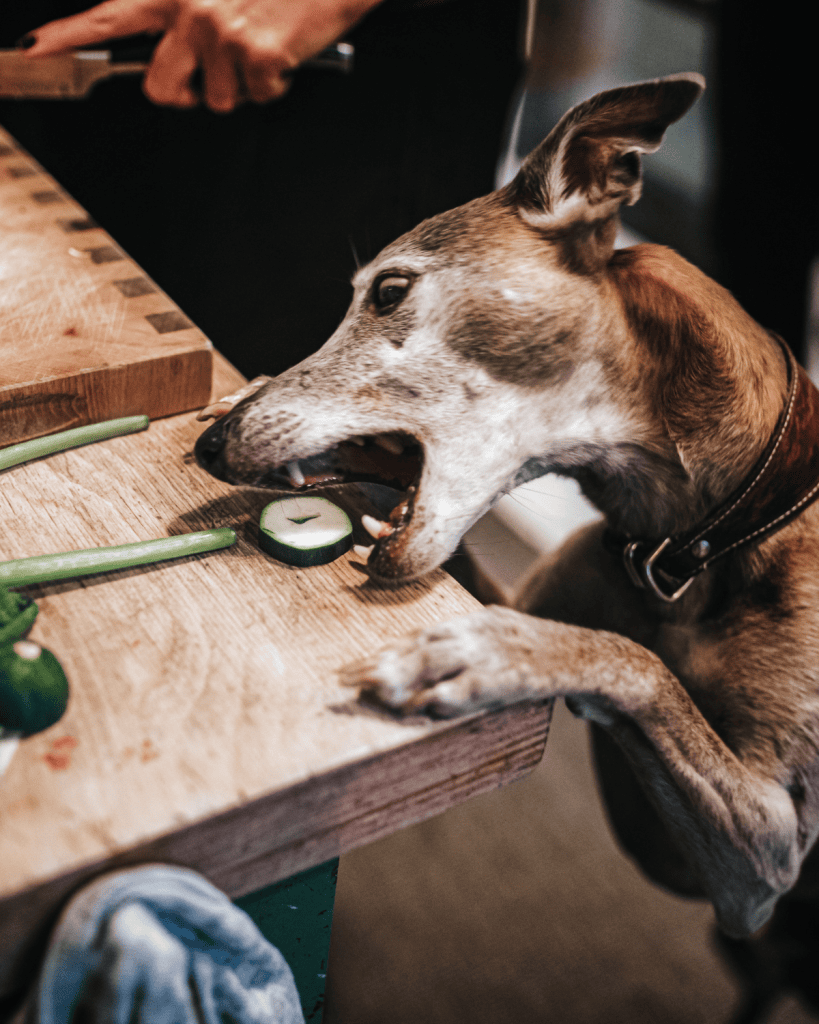
The Approach – In Short
Essentially, we manage access to jumping/begging and we reinforce an alternative behavior.
This is, at it’s core, an advanced bed/place cue with heavy distraction.
This works for your living room meals too, just manage a space away from your sofa and be aware that your dog will naturally have more access to you and your plate on the sofa, than at a table
Set a goal
The very first thing we’re going to do is look at how an ideal mealtime looks for you. You’re sat at the table (or your sofa, no judgement), and your dog is where and doing what?
For me, this looked like: I’m sat at the table, and my dog goes to bed, lays there for the duration, and then gets rewarded when we’re done. We also have a tether to the stove (stove is around 500lbs) which allows some error, but we can shorten it down if we need to.
For you, you might be okay with them getting a treat, or a kong every night at dinner time, you may be okay with them sitting beside you – so long as they’re not drooling over your spaghetti (Spaghetti a la slobber, anyone? No? Huh…). For everyone, that looks different. Write yours down and…

Prepare For Training
Look at your home, and look at your goal. I find it really easy to set up like this:
We keep an adult either side of the table, closer to the dog, children are placed further down the table, and the dog bed is in the corner (this also helps us minimise access to kitchen counters!).
We also tend to keep a jar of treats in the center of the table for ease of access by the adults on the table (We want to make sure that kids don’t become treat haven’t, because kids tend to flex the rules quickest).
We keep the bed close to the dining table – this is actually one of our dog’s normal sleeping area, but it works well for this training too. I keep it close enough to our dinine area, but not too close. This way you can balance your dogs FOMO (Fear of missing out) with your desire to create distance from the distraction on the table.
Multi-dog home note: If you live in a multi-dog home, please start this training separately. That’s really important for all training that involves multiple dogs – you train individually, then in pairs, then in trios etc.
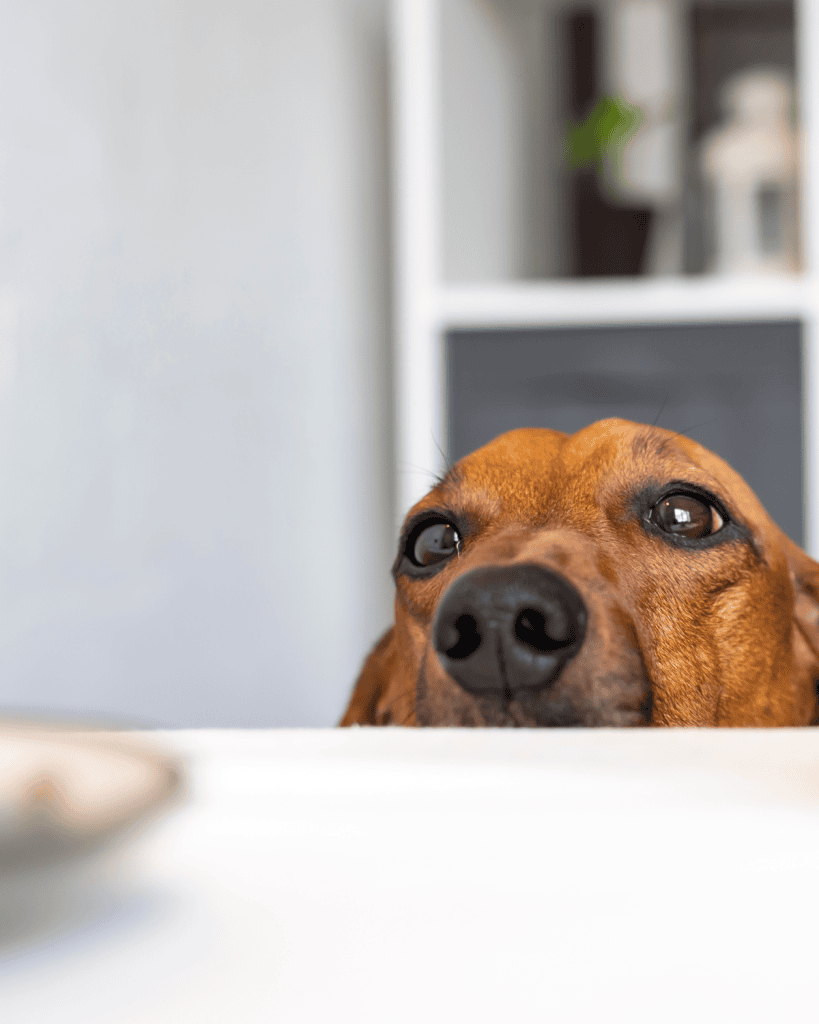
Pre-requisite knowledge & cues
I find (when training this for myself, and with others) that the following basic commands (or cues) are useful things to know prior to this training;
- Place or Bed – having a place or bed cue that your dog already knows and understands as an instruction
- Sit/Down – These are interchangeable depending on your goals. For me, I like down for this, just because it helps me see that they’re genuinely relaxing (over time).
The good news is that these are pretty easy skills to teach and are just a great foundation to build your dog table manners upon.
Useful Items/Skills
- Dog treats (food usually works well here as your reward, as dogs who aren’t food motivated don’t tend to beg)
- A bed or cot (to act as their specific place)
- A containment method*
- A Kong or other chew/enrichment toy (optional)
- Throwing treat accuracy.
* A containment method here, is referring to something like a crate, a play pen, a leash, a baby gate, or even a door or dutch door will all work well. For outdoor dining you may want to look at a leash!

Step 1 – Mock it up
Heck, when do we sit at the table without food there? This means your dog learns (pretty quickly too) Table = food. So, we have to learn or help our dogs to craft a new association: i.e. Table means I go to bed. (Bed of course here can mean any designated spot).
This pretty much just involves you sitting at your table, and directing pup to their bed. Asking them to lay down and rewarding the behavior.
Initially this may look like you focusing solely on your pup, then it may look like you phasing your focus and building duration – depending on how good your dogs place/bed skill is, and how high their food drive is.

Step 2 – Start with a shorter meal
Whether that’s breakfast, or lunch, you may find that starting with a shorter siting is going to make it easier. So maybe even something quick like a slice of cake.
Keep the rate of reinforcement (i.e. how quickly you reward) really high to begin, so that literally may be one mouthful for you, and a treat for them.
This is why I say keep the meal short because it’s very easy to get frustrated as a human with this, let alone with a dog.
As you progress, you can either measure in bites, or in seconds, but try say, one bite, two bites, one bite, three bites etc. until your reliably getting around ten bites.
If pup breaks position, redirect them to their bed, reward them for going to bed, and recommence eating, remembering to reward a little quicker this time and build up again.
If Pup can’t hold the position, increase the management, for us this looks like adding in our leash tether to the stove as it just helps us remind our dogs that this is the zone they should be in.

Step 3 – Try Dinner
As you’re seeing success – you’re going to increase your rate of reinforcement again, reinforcing as regularly as you can, and praise reward for sustaining the desired behavior.
Set backs here are likely going to be your pup getting up and returning to begging.
Calmly pop pup back into their bed cue, reward this, and begin eating again! It’s a slow process, but it does work – just keep resisting those puppy-dog eyes!
Step 4 – Decrease and Phase Out Reinforcement
As you progress, switch your cues from a reward (treat) to a bridging word or praise to commend them for being great dogs, but to encourage them to hold position.
This is the toughest part, and the part that needs to the most practice and flexibility.

Altneratively Methods
Removal from the room – One of the quickest, easiest ways to prevent this bad behavior is if the pet parent just removes the dog from the room, and if that’s your choice? So be it!
A Kong or chew – We can also keep your dog rewarded whilst in their bed or the desired positon with something like a kong. And it’s a great way to start this training in the first place. It’s kind of like giving your puppy their own food, or their own meal whilst you’re in the dining area for them to focus on. This means for the whole time you’re eating, pup is being rewarded for being where you want him to be. This can be great if you have little kids and can’t invest that time into training.
Do be aware though, that this is a compromise (as such) as if you don’t have the kong it’s unlikely that pup will hold their bed position, but it can make a useful first step into a peaceful meal time together (and is wonderful if you have guests).
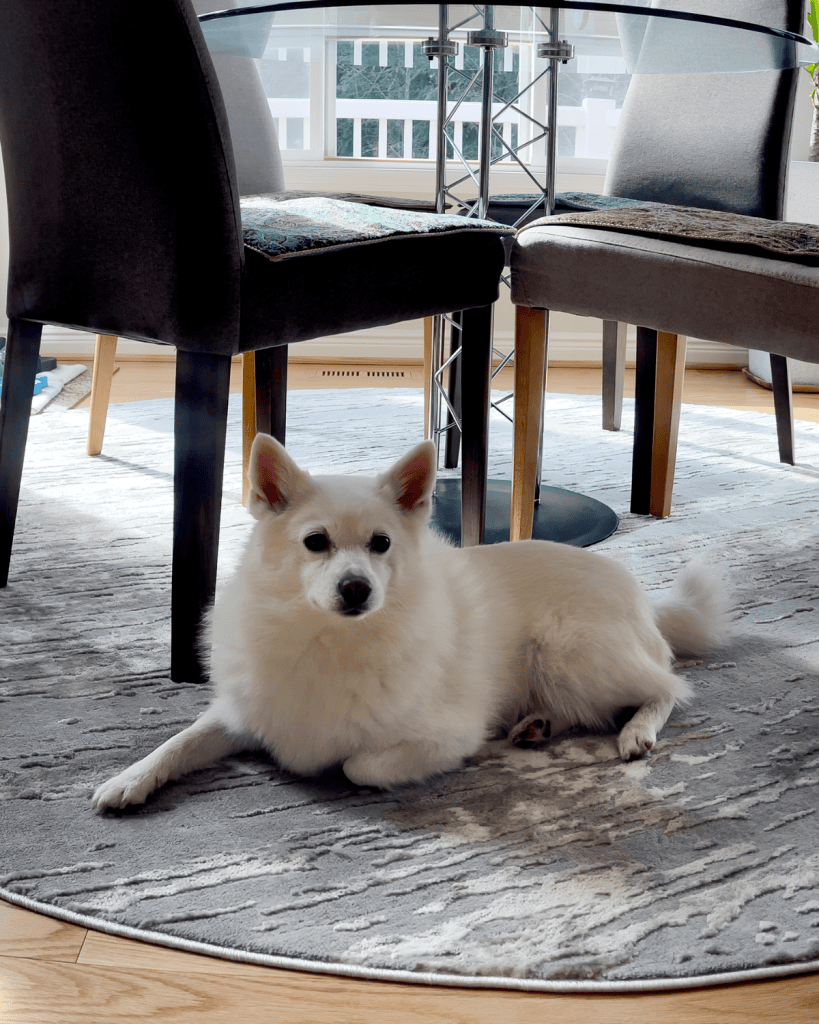
How Long Does Training Table Manners Take?
There are a number of variables such as;
- How much training you’re already working on
- How biddable your dog is (or isn’t)
- How well you’re already doing with exposure to distractions
- How much time you’re investing in training
- How many rule breaks/set backs there are
And probably some other factors that may be unique to your home. But as always? The more time you invest in training the quicker new training comes. For example, we’re actually pretty solidly through this after around 5 sessions.
For you, it could take a few sessions too! But it also could take a couple of months. But if you’re not seeing progress, you’re always welcome to come training!
Remember: We Don’t Punish, We Enable Desirable Behavior
We’ve learned a long time ago, that punishment really doesn’t work in animal training, or human/child education for that matter, so, we really need to focus on creating a positive environment for your dog to learn the behavior you want from them.
Other Tips
- Reward well when you leave the table – This one actually is one I swear by – but isn’t typically a part of Table manners training. If we predictably teach that the best part of the meal, for your dog, comes when you leave the table? They become more eager for that. So, I use that as part of (essentially) pattern training to show our dogs this is the best bit for them.
- Be smarter than your dog – some dogs are really highly motivated by food, and delicious food they’re not meant to have can bring out the Moriarty in our dogs. So make sure you’re a step ahead of them at all times. This is where management is the best and most important step. This step can be hard for the best of us some days! So don’t be hard on yourself if this is where you struggle is coming from.
- Be Consistent – Across all family members, across all tables, across all locations. Human meal times don’t equal doggy snack time. Human meal times mean we go lay down and leave our humans alone time.
- Know Your Dog – Depending on your dog, you may find they will relax more in different ways, and this “tip” is more about knowing your dog than just blanketly following this advice. For example, Indie, my German shepherd, thrives on structure – but my hounds thrive on cuddling. So, oddly, if we eat on the sofa, it’s actually easier if the hounds are curled up on the sofa next to one of us.
- Setbacks happen, and that’s OK – Setbacks are just a part of life, and they’re a part of training too. Be conscious of succeeding and letting up too quickly, be conscious that your dog will probably regress and you’ll get there. It just takes time.
- Rate Of Reinforcement – If your pup got up or got too intent, it likely means you didn’t reinforce quicfk enough.
- Not all reinforcement must be a reward – In this instance, verbal encouragement or “Bridges” can be used to great efficacy. So a quick “Well done” or “keep it up” is perfect to begin extending the duration of your pup’s bed cue whilst you’re eating.
- No scraps – Scraps of human food can be dangerous as well as creating an environment where bad manners thrive. Whilst I’m ok with dogs eating more than just dog food from their food bowl, scraps from a counter or a table is just one of those habits we form that shapes behavior in our dogs that isn’t conducive to every day life.
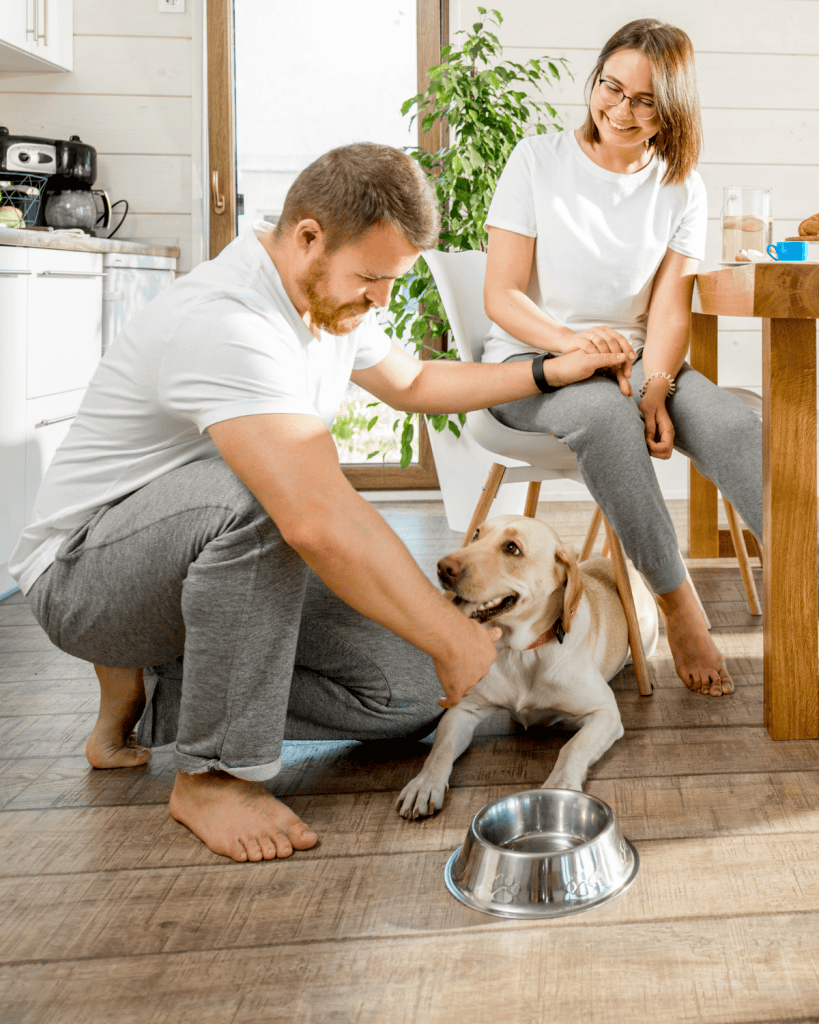
Frequently Asked Questions
Q – Should I use “Leave It”?
A: Personally, as a trainer, I’m not a big enthusiast when it comes to “Leave it”. It can build a lot of frustration, and in this instance leave it doesn’t really teach our dogs what we want. The method described above tends to have a better effect.
Q – Can Older Dogs Learn Table Manners?
A: Yes! Older dogs can learn just the same as puppies, it’s never too late to teach your dog new tricks. Trust me! Mine are 6 & 7 when we’ve just done it!
Q – Doesn’t rewarding your dog while you’re at the table encourage begging?
A: Ahhh, tricky – yes and no. It’s how the dog gets the reward that will encourage or discourage begging specifically. i.e. we’re making their bed the key to unlocking a reward whilst you eat – not sitting with their head on your lap, or pawing at you and whining. We reward a desired alternative behavior and shape that.
Q – How can I handle situations where guests or children encourage my dog’s begging?
Love this! Positive reinforcement works with people too, so clearly outlining to your guests that we don’t allow Fido to have table scraps and setting that boundary is really great, and particularly for kids you can add things like “But if we get through the meal, fido gets a special treat, would you like to give that to him?” can be helpful. As for adults? They should respect you enough to follow your rules with your dog – if they don’t? Then it might be worth re-evaluating how you set boundaries up in general – and that one I can’t help you with! Head to your Therapist for that!
Q – Are there specific breeds that are naturally better at respecting mealtime boundaries, or is it all down to individual training?
A: Gosh, so, the answer is technically no. However, some dogs just aren’t as food driven, so they will naturally respect table boundaries because the food doesn’t interest them, then there will be dogs who just train quicker and dogs who will train slower.
Q – Should Their Bed be placed close to the dinner table?
A: This one if your call. I find the best way to create that control (and balance how accurate my treat throwing is) it’s a good idea to have it in the dining room or area so that I can accurately toss a treat when I see good behavior I want to capture.
Table Manners Are For Dogs Too!
We’ve explored the nature of puppy begging behavior, discovered its ties to inadvertent rewards, and emphasized the correct application of positive reinforcement to create good manners and the ultimate well-behaved dog. As we strive to teach our puppies good table manners, remember it’s our reactions that shape their behaviors. Rewarding desirable actions while ignoring begging is paramount.
The journey to proper table manners requires patience, consistency, and understanding—it won’t happen overnight. Stay steadfast, and each step taken will bring us closer to a well-behaved companion during meal times.
Let’s carry forward with patience and consistency, shaping our puppies into polite family members. With correct application of positive reinforcement and a consistent approach, meal times can become enjoyable moments of peace. After all, this training journey is as enriching for us as it is for our awesome dogs.

Author, Ali Smith
Ali Smith is a professional, qualified, and multi-award winning trainer is the founder of rebarkable. She has always believed animals deserve kindness and champions force free methods. Believing that dog guardians will all choose the kindest options if proper information is provided, she aims to help all dog guardians who need it and make dog training as accessible as possible
Ali lives win Maryland, US with her husband and her three dogs.
